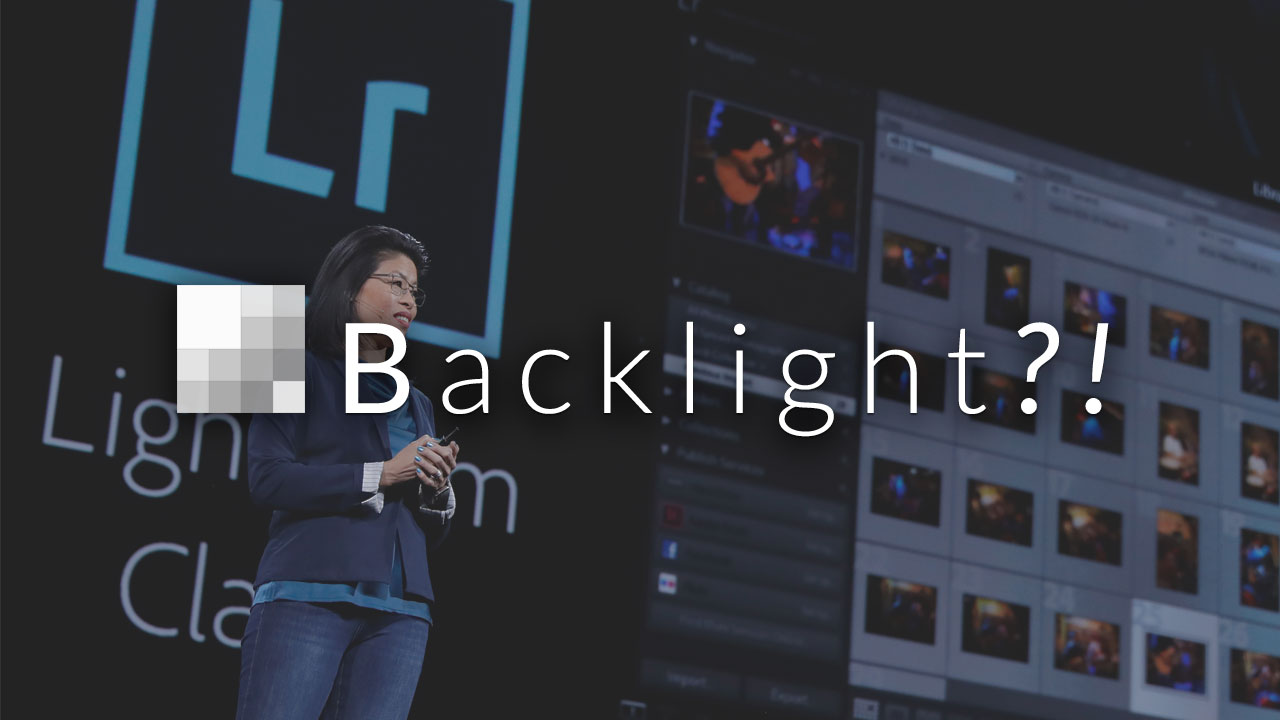Adobe has announced new versions of Lightroom, and you may be wondering how or whether these releases impact Backlight, or other TTG products.
Let’s first get up to speed with the most important bullet points.
- The existing Lightroom has been rebranded as Lightroom Classic.
- Lightroom Classic CC 7.0, direct sequel to Lightroom 6/CC2015, is now available.
- Perpetual licenses are finished; Lightroom is now subscription only.
- The new Lightroom CC is now available.
- Lightroom 6/CC2015 will continue to receive new camera and OS updates through the end of 2017.
I will post links for more complete coverage below. In the meantime, let’s talk about us.
Here at The Turning Gate, we’ve been hands-on with both Lightroom Classic and the new Lightroom CC for several weeks.
Lightroom Classic is the direct successor to the Lightroom we’ve all been using until now. For better or worse, the application feels very similar to Lightroom 6/CC2015, with performance improvements easy to see in some areas, and less so in others. The application also carries forward a lot of the same baggage it’s been lugging around forever.
Publish Services and the Web module seem to be unchanged from the previous version. So while we’ve received no improvements in the areas The Turning Gate most heavily relies upon, neither are we seeing any upsets. Backlight’s publisher works as well as ever, and even the CE4 plugins continue to work in Lightroom Classic.
Lightroom CC is an entirely new application. For all that I have been able to discern, it is essentially a cloud-based, desktop version of the Lightroom iPad app. It’s skimpy on features, and entirely lacking in support for third-party plugins, add-ons or extensions.
For now at least, users of Backlight or our Web module plugins should keep on with Lightroom Classic.
Meanwhile, Adobe is shaking things up, and the Internet is full of feelings. By all means, feel free to discuss your feelings in our forum or Facebook group. We are very interested in hearing your takes.
But have no fear for Backlight. Lightroom CC does not support third-party extensions, but we are neither surprised or alarmed by this. We expected it. The writing has long been on the wall, and with Backlight, we pivoted away from the Web module largely for this reason.
For now, we have Lightroom Classic, and that means we have plenty of time. We are already working towards making the next major version of Backlight independent of Lightroom, as has always been our plan, so that albums and photos can be managed by other means.
That said, we intend to support Lightroom’s Publish Services for as long as that remains an option. And should Adobe later provide an API for accessing images in its cloud, we will look to provide support.
For detailed coverage of Adobe’s Lightroom announcements, Piet Van den Eynde has posted a good overview video, and Victoria Bampton has published a series of thorough articles at the LightroomQueen Blog:
- What’s New in Lightroom Classic October 2017 Release (7.0)?
- Lightroom CC vs. Lightroom Classic – Which Do I Need?
- The Future of Lightroom
- Lightroom CC 1.0 Released!
- The End of Perpetual/Standalone Lightroom Licenses
If you read only one of the above articles, make it The Future of Lightroom. It’s pretty comprehensive.
